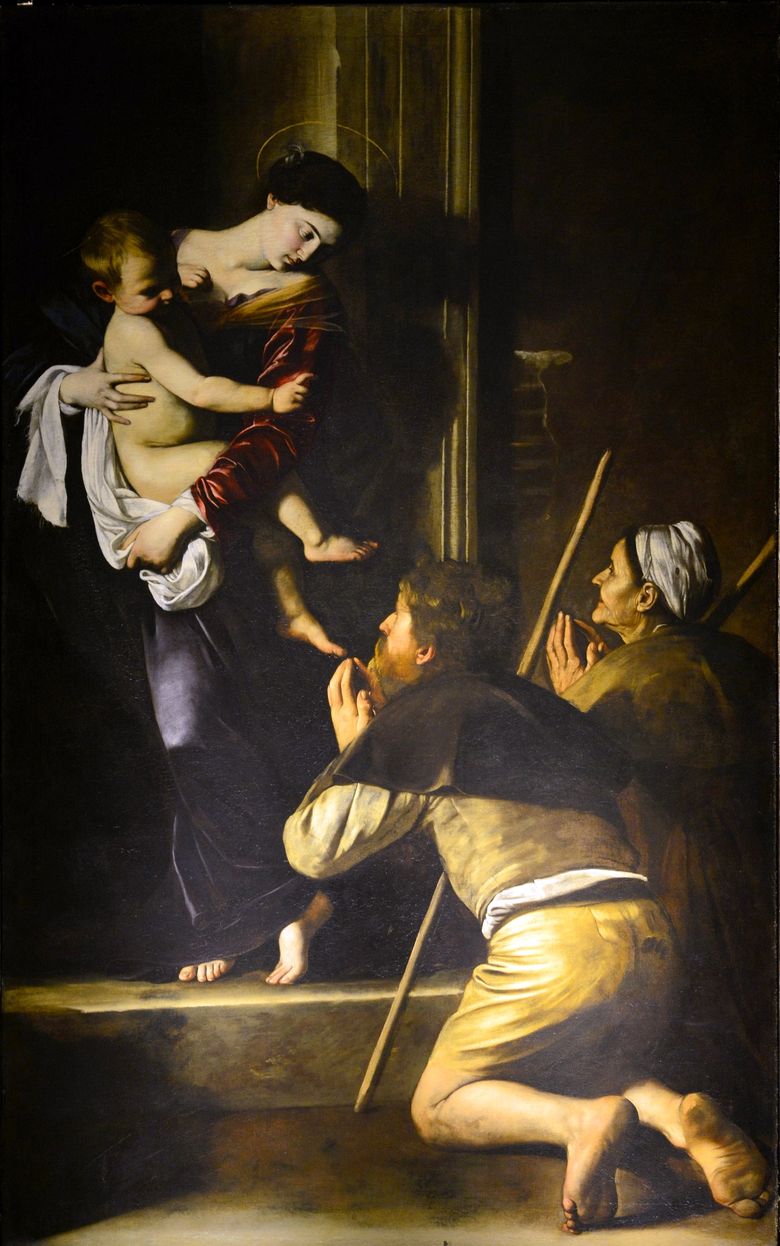
Between 1602 and 1606, Caravaggio painted five altar images for the Roman churches. Three of them were rejected by customers because of “obscenity”: “Saint Matthew and the Angel”, “Assumption of the Virgin” and “Madonna and the Serpent.” The last picture took its place in St. Peter’s Cathedral for two days, after which it was removed.
Representatives of the church found it indecent to portray the naked Christ in front, moreover, at the age of much older than prescribed by tradition. Two pictures with a more prosperous fate – “The Burial of Christ”, 1602-04 and “The Madonna of Loreto”, 1604-05.
The second painting, however, caused controversy. D. Ballone wrote about him: “Pilgrims – a man with dirty feet and a woman in a slovenly cap – made a noise, as many perceived them as an insult to such an exalted canvas.” This did not prevent the “Madonna of Loreto” from becoming one of the most famous works of Caravaggio.
 Madonna Loreto – Michelangelo Merisi da Caravaggio
Madonna Loreto – Michelangelo Merisi da Caravaggio Saint Matthew and the Angel by Michelangelo Merisi and Caravaggio
Saint Matthew and the Angel by Michelangelo Merisi and Caravaggio Madonna Loreto – Michel-Ange Merisi da Caravaggio
Madonna Loreto – Michel-Ange Merisi da Caravaggio Martyrdom of St. Matthew by Michelangelo Merisi and Caravaggio
Martyrdom of St. Matthew by Michelangelo Merisi and Caravaggio Madonna del Rosario by Michelangelo Merisi da Caravaggio
Madonna del Rosario by Michelangelo Merisi da Caravaggio Rest on the way to Egypt by Michelangelo Merisi da Caravaggio
Rest on the way to Egypt by Michelangelo Merisi da Caravaggio Confidence of Thomas by Michelangelo Merisi and Caravaggio
Confidence of Thomas by Michelangelo Merisi and Caravaggio Appeal of the Apostle Matthew by Michelangelo Merisi and Caravaggio
Appeal of the Apostle Matthew by Michelangelo Merisi and Caravaggio